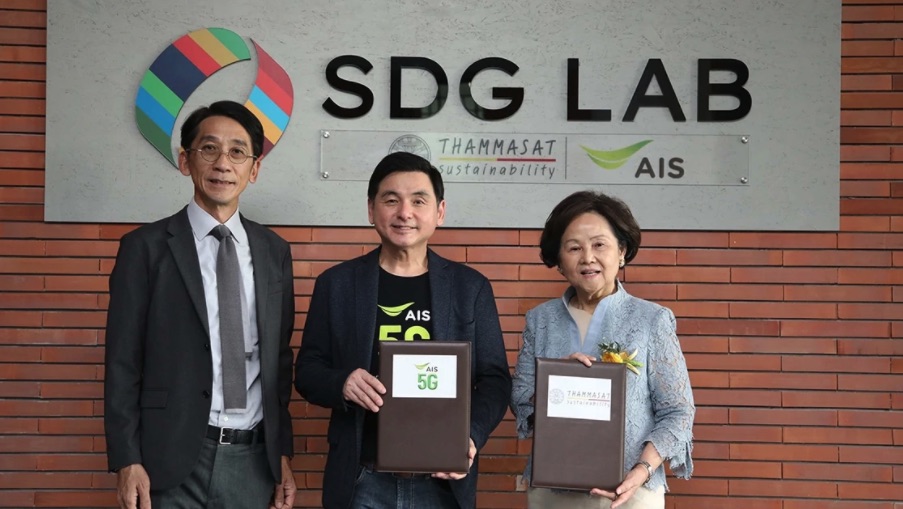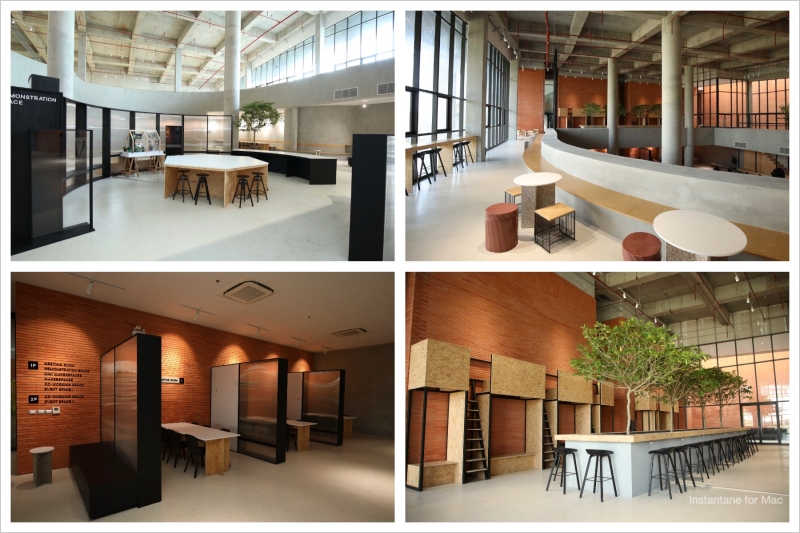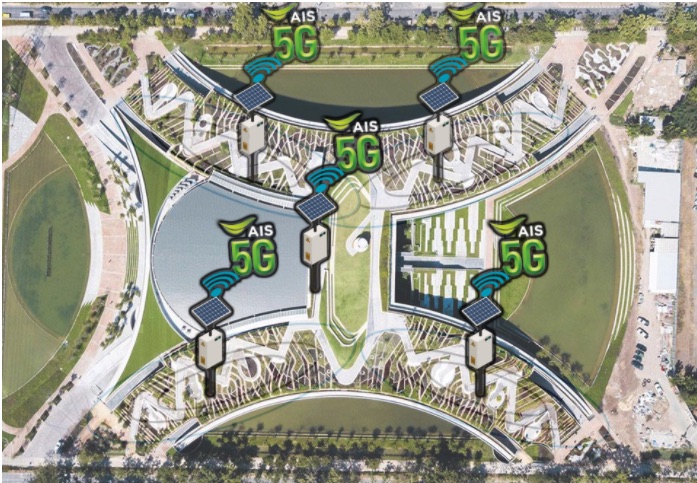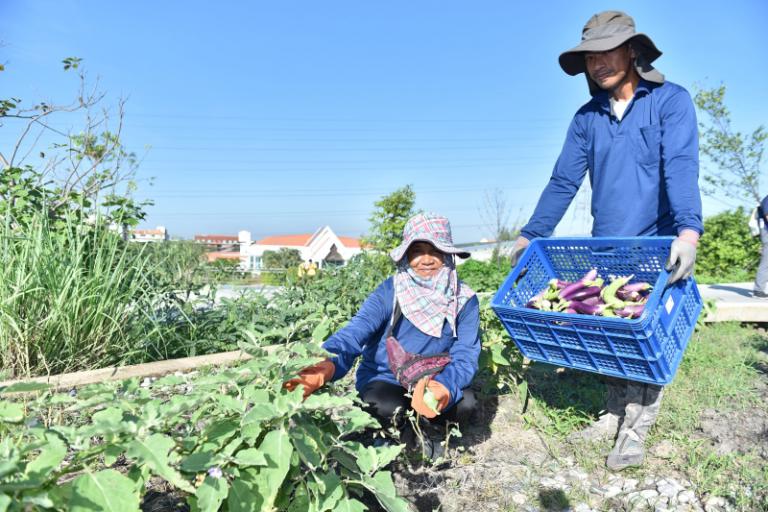SDG Lab by Thammasat & AIS – the first lab for sustainable development in Asia

Sponsored by

Sustainable Development Goals (SDGs) is the common goals globally. Many countries including Thailand are using these goals as the guideline for policy making in both public and private sectors. The ultimate goal is to improve people's quality of life while using resources efficiently and effectively without exceeding the amount that nature can potentially offer.
Thammasat University (TU) and Advanced Info Services (AIS) use technology and digital service to drive Thailand closer to the United Nations Sustainable Development Goals (SDGs), developing the country's economy, society, as well as solving today's environmental problem.

TU together with AIS open the first lab for sustainable development in Asia "SDG Lab by Thammasat & AIS" at 100 years Puey Park, Thammasat University, Rangsit Campus. The concept of SDG Lab by Thammasat & AIS is to support and drive the sustainable development as a source of action for solving global warming, climate change, and a few other sustainable development problems. The SDG lab is design and built under the concept of using 5G and IoT technology as a foundation for sustainable development, acting as the hub of experiments for innovators and inventors. At the lab, people can use the space to brainstorm and develop ideas and technology to solve any aspect of environment problem as well as elevating Thai people quality of life and transforming cities in the country to become smart cities.


SDG Lab by Thammasat & AIS is set to be a symbol of taking the community closer toward the SDGs, creating innovation and positive impacts on the society, and a practical space for people to work on their projects. For example, the building is built with open ceiling. There is also a slider connecting between the 1st and 2nd floor which symbolize the flow of innovative ideas. The furnitures are made from recycled natural materials like hay, wood, dead rubber, and carton. There is also an open space area filled with many small zones such as demonstration space, co-working space for innovators to create prototype to solve environmental problems and experiment and test on the real environment, event space and meeting rooms, equipped with network infrastructure and equipment like 3D printing machine.

Therefore, the design has a very significant role in delivering these purposes. The five main purposes of the SDG Lab by Thammasat & AIS are:
1) Climate& Environment: using 5G technology in solving climate change and air pollution problems.
2) City: using 5G technology to develop transportation systems within the university such as self-driving cars, at the same time, connect them to the security system in the area.
3) Living: improving our quality of life with recycled material by using technology to manage natural resources and electronics waste.
4) Farming: developing technology for sustainable farming that helps ensuring the sustainability of food supply with 5G and IoT technology, creating a sustainable change and potentially reducing energy used up to around 30%.
5) People: developing knowledge, creating inspiration, and promoting participation among the university network for sustainable development.

The concept of farming on 100th year Puey learning park rooftop came from the severity of global climate change and the fact that the world is getting hotter and hotter every day. Electrical energy, vehicle usage, production, consumption can release carbon dioxide all the time. To convert normal farms into Smart Farm, digital technology and systems have played an important role to connect and transfer information. Smart Farming uses many equipment and sensor with internet connection for uploading the data to platform and automate the equipment from anywhere. It is aiming to be the prototype to efficiently manage water usage in agricultural sector. AIS support the smart farm with the latest technology such as: IoT Sensor for checking and logging data from the plot, IoT Controller for controlling water hose via internet, 5G and Cloud Smart Farm for storing and analyzing data, and iFarm for making it easy for people to control the settings of devices.
For example, the soil moisture sensor system on open-field farming and wireless water valve system will measure and send the value to the system to calculate whether soil has proper moisture that plants need or not. If the soil moisture is proper, the system will not water the plant, once the soil becomes dry, the system will automatically transfer the water to the plant. This water management leads to a more efficient use of water. The PM2.5 weather measurement station in the farming area on rooftop is to monitor the change in air temperature. It will signal the device to prepare for the current or the upcoming weather conditions.
Smart Farm at SDG Lab by Thammasat & AIS aims to serve the three goals of SGDs. For Goal 2 “Zero Hunger”, SDG Lab by Thammasat and AIS will use an automated system of Smart Farm to help scale up food production in the time of need.
For Goal 12 “Responsible Consumption and Production”, sustainable use of resources includes production and efficient consumption of water. Therefore, proper water management helps reduce water consumption to the adequate level that the plant needs.
For Goal 13 “Climate Action”, the inappropriate use of fertilizer and water will greatly affect the climate. The soil moisture sensors can monitor the information and plant’s demand for a sufficient use of water.

SDG Lab by Thammasat & AIS, therefore, will be a prototype project for future innovation that will take our country to the next level of sustainable development. It also allows students, next generation of innovators, and start-up business to create sustainable innovation that will benefit the society and the country. This is resonating with the university's goal of creating a smart city.